Who designed the Morris Minor engine?
Moderators: Ian Grace, Will Grace
Who designed the Morris Minor engine?
A friend of mine believes his grandfather was responsible for the design of the Morris Minor ohc engine. I have no reason to doubt what he claims and what has told me all would point to this being the case. The old chap is of course no longer with us. Does anyone know a bit more about the design and development of the engine that they can share with me, or point me to where it has been discussed in the past?
-
Sam Christie
- Posts: 186
- Joined: Mon Nov 20, 2006 10:37 am
Re: Who designed the Morris Minor engine?
I am open to correction but understand the Minor engine traces back to an Hispano-Suiza V-12 aero engine built by Wolseley as the Wolseley Viper for the SE5 fighter.All had a shaft from the crank driving the OHC.


Wolseley used the same concept in cars in the 1920's and were bought by Morris (was it 1927?). I do not know if the 'Minor' engine was already under development at Wolseley before the Morris take over or when the idea of incorporating the dynamo as on the OHC Minor first appeared.
Did your friend's grandfather work for Wolseley or Morris or both?


Wolseley used the same concept in cars in the 1920's and were bought by Morris (was it 1927?). I do not know if the 'Minor' engine was already under development at Wolseley before the Morris take over or when the idea of incorporating the dynamo as on the OHC Minor first appeared.
Did your friend's grandfather work for Wolseley or Morris or both?
Re: Who designed the Morris Minor engine?
Fascinating, Derek, and absolutely right, Sam.
Let me quote from an article I wrote for the VSCC in 2004"
"The vintage Morris Minor did indeed have its origins early in 1927, by which time W. R. Morris had determined that he must produce a car to compete directly with the Austin Seven. The Seven had been in production for five years, and was selling in increasing volume. The chief reason why Morris did not produce a competitor to the Seven earlier is that, while it would certainly have captured sales from Austin, it would also have adversely affected sales of the hugely popular Morris Cowley, which was easily outselling the Seven in the then more popular 12 h.p class. Morris had moved up from light cars (his small White & Poppe-engined 2-seater) to the family sized Cowley in 1915, becoming prejudiced against smaller cars. However, by 1927, demand for smaller cars was booming at the expense of the 12 h.p class where output was dwindling. The time was right to launch the Minor, and plans were put into hand with some urgency.
The timing was coincident with the acquisition by Morris of Wolseley Motors from Vickers which then became known as Wolseley Motors (1927) Ltd. (the date of acquisition being included for three years as a legal requirement). The acquisition gave Morris access to new engine technology as well as greatly expanded manufacturing capacity, the Wolseley plants at Adderley Park and Ward End having a combined production capacity at that time of some 20,000 cars per year.
Three years earlier in 1924, Morris had made a similar acquisition in the form of E. G. Wrigley & Co. Ltd. of Soho, Birmingham. In that acquisition, Morris also acquired the majority of the Wrigley staff. Two gentlemen whom he had already acquired from Wrigley by the time of the takeover would figure significantly in the genesis of the Minor and the Midget - Cecil Kimber, who we all know subsequently established the Morris Garages and Frank Woollard who is rather less well known. In fact, Kimber had deserted the ship before it sank and joined Morris Garages in 1921 as sales manager, poorer in pocket but richer in experience. Woollard had been Chief Engineer at Wrigleys and became their assistant Managing Director before the company was taken over by Morris, when he was appointed works manager of Morris Engines Ltd. Indeed Woollard had been poached by Morris prior to the takeover and had already joined Morris Engines Ltd. by May 1923. Morris Engines had previously been the old Hotchkiss et Cie. works at Coventry which was taken over by Morris in 1923 during the Bullnose era. Leonard Lord had joined Hotchkiss in 1922, and therefore came under Morris at this time.
The other personality to bring in at this point is Oliver Boden. Boden had spent most of his career working in different parts of the Vickers organization and was in charge of the Vickers subsidiary, Wolseley Motors, when Morris bought Wolseley in Feb 1927. Morris retained Boden as MD of the new Wolseley Motors (1927) Ltd. It was Boden and Wolseley Motors (1927) Ltd. that jointly patented an improved method of mounting and driving the dynamo (patent no. 318,031), the same method of driving the dynamo that was ultimately to be employed on the Minor engine. In 1927/8, Lord was sent from Morris Engines Ltd. to Wolseley to work for Boden, moving to take charge of Morris Motors in 1933. Three years later, Boden was promoted from MD of Wolseley Motors to Vice Chairman of Morris Motors when Lord left after a disagreement with William Morris (by then Lord Nuffield). Boden died in March 1940 while directing Spitfire production at Castle Bromwich, his death being attributed to overwork during the dark days leading up to the Battle of Britain.
Now, that first mention in the Motor in May 1928 described the new car as the Morris 7 h.p. While this statement has long been considered as a journalistic gaffe on the part of the reporter, we now know better. In the Morris Garages collection at the Oxford County Library, there is a 1928 diary which belonged to Morris. Unfortunately, he only filled it in for two or three days. Nevertheless, these scant entries are extremely revealing. The page for 10th July 1928 refers to his visit to Boden at Wolseley Motors. Among the items discussed were:
‘Sports 7 h.p sample engine MG’
‘Re larger bore to 7 block’
‘Skinner re small SU’
‘Re small 7 needles for low consumption’
It is stunning to discover that, just before it was officially announced in the Autocar of 31st August, the Minor was still to be a 7 h.p motor car, and it would appear that the bore was increased at the very last minute to provide additional power, possibly after unsatisfactory road testing of the prototype Minors. It is equally revealing to see that the Midget was also to have been a 7 h.p model! It is also interesting to relate this increase in bore to Kimber’s subsequent sleeving down of the block to allow EX 120 to fall within the 750 c.c. class (C Types reverted to 57 mm bore with a reduced throw crank to achieve the magic 750 c.c. and therefore benefited from a stronger crank). Indeed, Kimber would have known that a 750 c.c sports model would be far more appropriate in competition at that time, so may well have been disappointed with this capacity increase by Morris."
Let me quote from an article I wrote for the VSCC in 2004"
"The vintage Morris Minor did indeed have its origins early in 1927, by which time W. R. Morris had determined that he must produce a car to compete directly with the Austin Seven. The Seven had been in production for five years, and was selling in increasing volume. The chief reason why Morris did not produce a competitor to the Seven earlier is that, while it would certainly have captured sales from Austin, it would also have adversely affected sales of the hugely popular Morris Cowley, which was easily outselling the Seven in the then more popular 12 h.p class. Morris had moved up from light cars (his small White & Poppe-engined 2-seater) to the family sized Cowley in 1915, becoming prejudiced against smaller cars. However, by 1927, demand for smaller cars was booming at the expense of the 12 h.p class where output was dwindling. The time was right to launch the Minor, and plans were put into hand with some urgency.
The timing was coincident with the acquisition by Morris of Wolseley Motors from Vickers which then became known as Wolseley Motors (1927) Ltd. (the date of acquisition being included for three years as a legal requirement). The acquisition gave Morris access to new engine technology as well as greatly expanded manufacturing capacity, the Wolseley plants at Adderley Park and Ward End having a combined production capacity at that time of some 20,000 cars per year.
Three years earlier in 1924, Morris had made a similar acquisition in the form of E. G. Wrigley & Co. Ltd. of Soho, Birmingham. In that acquisition, Morris also acquired the majority of the Wrigley staff. Two gentlemen whom he had already acquired from Wrigley by the time of the takeover would figure significantly in the genesis of the Minor and the Midget - Cecil Kimber, who we all know subsequently established the Morris Garages and Frank Woollard who is rather less well known. In fact, Kimber had deserted the ship before it sank and joined Morris Garages in 1921 as sales manager, poorer in pocket but richer in experience. Woollard had been Chief Engineer at Wrigleys and became their assistant Managing Director before the company was taken over by Morris, when he was appointed works manager of Morris Engines Ltd. Indeed Woollard had been poached by Morris prior to the takeover and had already joined Morris Engines Ltd. by May 1923. Morris Engines had previously been the old Hotchkiss et Cie. works at Coventry which was taken over by Morris in 1923 during the Bullnose era. Leonard Lord had joined Hotchkiss in 1922, and therefore came under Morris at this time.
The other personality to bring in at this point is Oliver Boden. Boden had spent most of his career working in different parts of the Vickers organization and was in charge of the Vickers subsidiary, Wolseley Motors, when Morris bought Wolseley in Feb 1927. Morris retained Boden as MD of the new Wolseley Motors (1927) Ltd. It was Boden and Wolseley Motors (1927) Ltd. that jointly patented an improved method of mounting and driving the dynamo (patent no. 318,031), the same method of driving the dynamo that was ultimately to be employed on the Minor engine. In 1927/8, Lord was sent from Morris Engines Ltd. to Wolseley to work for Boden, moving to take charge of Morris Motors in 1933. Three years later, Boden was promoted from MD of Wolseley Motors to Vice Chairman of Morris Motors when Lord left after a disagreement with William Morris (by then Lord Nuffield). Boden died in March 1940 while directing Spitfire production at Castle Bromwich, his death being attributed to overwork during the dark days leading up to the Battle of Britain.
Now, that first mention in the Motor in May 1928 described the new car as the Morris 7 h.p. While this statement has long been considered as a journalistic gaffe on the part of the reporter, we now know better. In the Morris Garages collection at the Oxford County Library, there is a 1928 diary which belonged to Morris. Unfortunately, he only filled it in for two or three days. Nevertheless, these scant entries are extremely revealing. The page for 10th July 1928 refers to his visit to Boden at Wolseley Motors. Among the items discussed were:
‘Sports 7 h.p sample engine MG’
‘Re larger bore to 7 block’
‘Skinner re small SU’
‘Re small 7 needles for low consumption’
It is stunning to discover that, just before it was officially announced in the Autocar of 31st August, the Minor was still to be a 7 h.p motor car, and it would appear that the bore was increased at the very last minute to provide additional power, possibly after unsatisfactory road testing of the prototype Minors. It is equally revealing to see that the Midget was also to have been a 7 h.p model! It is also interesting to relate this increase in bore to Kimber’s subsequent sleeving down of the block to allow EX 120 to fall within the 750 c.c. class (C Types reverted to 57 mm bore with a reduced throw crank to achieve the magic 750 c.c. and therefore benefited from a stronger crank). Indeed, Kimber would have known that a 750 c.c sports model would be far more appropriate in competition at that time, so may well have been disappointed with this capacity increase by Morris."
Re: Who designed the Morris Minor engine?
Then there was Robin Barraclough's article which was printed in our M 108 Magazine and was also printed in the VSCC Bulletin:
OHC Pioneer
It is generally accepted that the design of the o.h.c. Morris Minor engine was inherited by W. R. Morris along with his purchase of the Wolseley company in 1927, and that Wolseleys were the originators of the scheme of taking the drive to the overhead camshaft through the dynamo. It may only be coincidence, but some three years before he purchased Wolseleys, W.R.Morris had purchased a company, E. G. Wrigley & Co Ltd., which was offering an engine with the same layout of the drive to the overhead camshaft via the dynamo. E. G. Wrigley were better known for axles and transmissions than engines and had supplied the rear axles and steering assemblies for the White & Poppe-engined Morris Oxfords of the Edwardian era. The o.h.c. Wrigley engine, complete naturally with a Wrigley gearbox, was exhibited at both the 1922 and 1923 London Motor Shows and was of 1244 c.c. with a bore of 60mm and stroke of 110mm. This engine appears to have been designed for high performance rather than low price, as it featured roller bearing big ends and a built-up crankshaft, but there is no record of any manufacturer fitting Wrigley engines. It is instructive to compare this Wrigley engine with the 2,468 c.c. six cylinder o.h.c. Morris engine, which was introduced in 1927.
A direct link between the engines is Frank Woollard, who must have known every detail of the 1922 Wrigley engine, as he was the Chief Engineer and Assistant Managing Director of that company at the time. He would have taken this knowledge with him when he joined Morris Engines - formerly the Coventry branch of Hotchkiss - as General Manager in May of 1923. Woollard was a brilliant production engineer, and he increased the output at Morris Engines from 300 units per week in May 1923 to 1200 per week by December 1924.
In 1925, he started work with George Pendrell on the design of a 2½-litre o.h.c. Morris engine. In November 1925, they patented a drive for the overhead camshaft which utilised a coupling rod, but a special form of chain drive was finally adopted. However, what they apparently ignored or rejected was the Wrigley scheme for driving the camshaft via the dynamo. This suggests that Woollard was not the originator of the idea and that the Wrigley engine of 1922 was not an in- house design. What is clear is that the only feature that the Wrigley and Morris Minor engines have in common is a drive to the camshaft via the dynamo. The Wrigley engine would have been too expensive to produce for a car in competition with the Austin Seven.
To obtain a balanced view, I asked VSCC member and owner of an original Type 40A Bugatti, Mike Lowndes, what his father, the Morris distributor for Carmarthen, had thought of the o.h.c. Minor. Morris dealers found the most difficult aspect of selling Minors was that the sale depended far more often than in the case of an Oxford or Cowley on taking a motorcycle or motorcycle combination in part exchange. However the dealers, with the exception of a few such as the Colmore Depot, were not in the motorcycle trade and therefore could not resell the motorcycles to best advantage. In terms of design, about the only complaint was the SU carburettor, which had the float chamber cast in one with the main body. This might have cut cost, but it throttled performance, since it resulted in an instrument with a smaller choke size than the model with a separate float chamber. An S.U. carburettor with a separate float chamber was always fitted to the M-type M.G and was also supplied as a rule by W. H. Burgess as service replacement for the Minor. In most respects, the engine of the Minor was of excellent design, for which MGs must have been thankful when they came to tune it. For example, the plain rear main of the Minor lasted far better than that of a Riley with a two-bearing crank, because the Minor had a front main ball bearing, which was semi-self aligning to accommodate a degree of crankshaft whip.
Although the ingenuity of Wolseley cylinder head design escapes many, it did not go unnoticed by George Roesch. It is acknowledged, on page 148 of Georges Roesch and the Invincible Talbot, that Roesch developed the design of the cylinder head of the Talbot 105 from that of the Wolseley. The Wolseley head is not a copy of a Hispano one.
The valve timing of the Minor, with the inlet opening after t.d.c, is often taken as proof (particularly in some MG circles) that the Wolseley engineers did not know what they were doing. However, the timing gives a very slow, even tick over and smooth, low speed performance. This is what the customer wanted for negotiating vintage traffic, which was often reduced to a crawl by horses and carts and under-powered lorries on solids. The engine of the Minor had not been de-tuned to make it safe for the public. In fact, the engine started life as a ‘Seven’, but, late in its development, was bored out to an ‘Eight’ for extra power.
The Minor has a reputation for being a difficult car to maintain. Actually, the opposite is true. Wolseleys were designed for ease of maintenance, and it is, for example, much easier to set the tappets accurately on an o.h.c. Minor than side-valve one. Oil slinging from the camshaft drive was not a major problem during the Minor’s normal life span, although it often became one on the cars that survived to become student transport."
OHC Pioneer
It is generally accepted that the design of the o.h.c. Morris Minor engine was inherited by W. R. Morris along with his purchase of the Wolseley company in 1927, and that Wolseleys were the originators of the scheme of taking the drive to the overhead camshaft through the dynamo. It may only be coincidence, but some three years before he purchased Wolseleys, W.R.Morris had purchased a company, E. G. Wrigley & Co Ltd., which was offering an engine with the same layout of the drive to the overhead camshaft via the dynamo. E. G. Wrigley were better known for axles and transmissions than engines and had supplied the rear axles and steering assemblies for the White & Poppe-engined Morris Oxfords of the Edwardian era. The o.h.c. Wrigley engine, complete naturally with a Wrigley gearbox, was exhibited at both the 1922 and 1923 London Motor Shows and was of 1244 c.c. with a bore of 60mm and stroke of 110mm. This engine appears to have been designed for high performance rather than low price, as it featured roller bearing big ends and a built-up crankshaft, but there is no record of any manufacturer fitting Wrigley engines. It is instructive to compare this Wrigley engine with the 2,468 c.c. six cylinder o.h.c. Morris engine, which was introduced in 1927.
A direct link between the engines is Frank Woollard, who must have known every detail of the 1922 Wrigley engine, as he was the Chief Engineer and Assistant Managing Director of that company at the time. He would have taken this knowledge with him when he joined Morris Engines - formerly the Coventry branch of Hotchkiss - as General Manager in May of 1923. Woollard was a brilliant production engineer, and he increased the output at Morris Engines from 300 units per week in May 1923 to 1200 per week by December 1924.
In 1925, he started work with George Pendrell on the design of a 2½-litre o.h.c. Morris engine. In November 1925, they patented a drive for the overhead camshaft which utilised a coupling rod, but a special form of chain drive was finally adopted. However, what they apparently ignored or rejected was the Wrigley scheme for driving the camshaft via the dynamo. This suggests that Woollard was not the originator of the idea and that the Wrigley engine of 1922 was not an in- house design. What is clear is that the only feature that the Wrigley and Morris Minor engines have in common is a drive to the camshaft via the dynamo. The Wrigley engine would have been too expensive to produce for a car in competition with the Austin Seven.
To obtain a balanced view, I asked VSCC member and owner of an original Type 40A Bugatti, Mike Lowndes, what his father, the Morris distributor for Carmarthen, had thought of the o.h.c. Minor. Morris dealers found the most difficult aspect of selling Minors was that the sale depended far more often than in the case of an Oxford or Cowley on taking a motorcycle or motorcycle combination in part exchange. However the dealers, with the exception of a few such as the Colmore Depot, were not in the motorcycle trade and therefore could not resell the motorcycles to best advantage. In terms of design, about the only complaint was the SU carburettor, which had the float chamber cast in one with the main body. This might have cut cost, but it throttled performance, since it resulted in an instrument with a smaller choke size than the model with a separate float chamber. An S.U. carburettor with a separate float chamber was always fitted to the M-type M.G and was also supplied as a rule by W. H. Burgess as service replacement for the Minor. In most respects, the engine of the Minor was of excellent design, for which MGs must have been thankful when they came to tune it. For example, the plain rear main of the Minor lasted far better than that of a Riley with a two-bearing crank, because the Minor had a front main ball bearing, which was semi-self aligning to accommodate a degree of crankshaft whip.
Although the ingenuity of Wolseley cylinder head design escapes many, it did not go unnoticed by George Roesch. It is acknowledged, on page 148 of Georges Roesch and the Invincible Talbot, that Roesch developed the design of the cylinder head of the Talbot 105 from that of the Wolseley. The Wolseley head is not a copy of a Hispano one.
The valve timing of the Minor, with the inlet opening after t.d.c, is often taken as proof (particularly in some MG circles) that the Wolseley engineers did not know what they were doing. However, the timing gives a very slow, even tick over and smooth, low speed performance. This is what the customer wanted for negotiating vintage traffic, which was often reduced to a crawl by horses and carts and under-powered lorries on solids. The engine of the Minor had not been de-tuned to make it safe for the public. In fact, the engine started life as a ‘Seven’, but, late in its development, was bored out to an ‘Eight’ for extra power.
The Minor has a reputation for being a difficult car to maintain. Actually, the opposite is true. Wolseleys were designed for ease of maintenance, and it is, for example, much easier to set the tappets accurately on an o.h.c. Minor than side-valve one. Oil slinging from the camshaft drive was not a major problem during the Minor’s normal life span, although it often became one on the cars that survived to become student transport."
Re: Who designed the Morris Minor engine?
During the late 1960s and early 1970s there was a Wolseley Viper engine on display at The Science Museum in South Kensington. If chopped in half the resemblance to the ohc Minor engine was remarkable.
I don't know if it is still on display, or now hidden away at the store (rarely open) at Wroughton.
I don't know if it is still on display, or now hidden away at the store (rarely open) at Wroughton.
Last edited by garagiste on Mon Jan 28, 2013 6:41 pm, edited 1 time in total.
Re: Who designed the Morris Minor engine?
At the 2002 VSCC Prescott, there was an autojumbler who brought along two early Wolseley engines in the back of his van. I took these photos which make interesting comparison with the Minor engine.
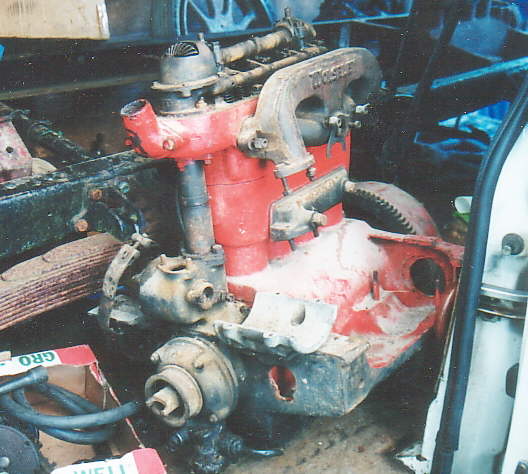
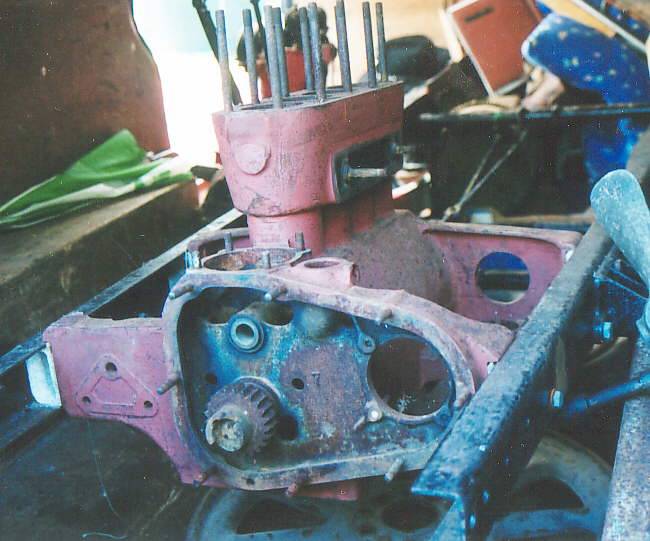
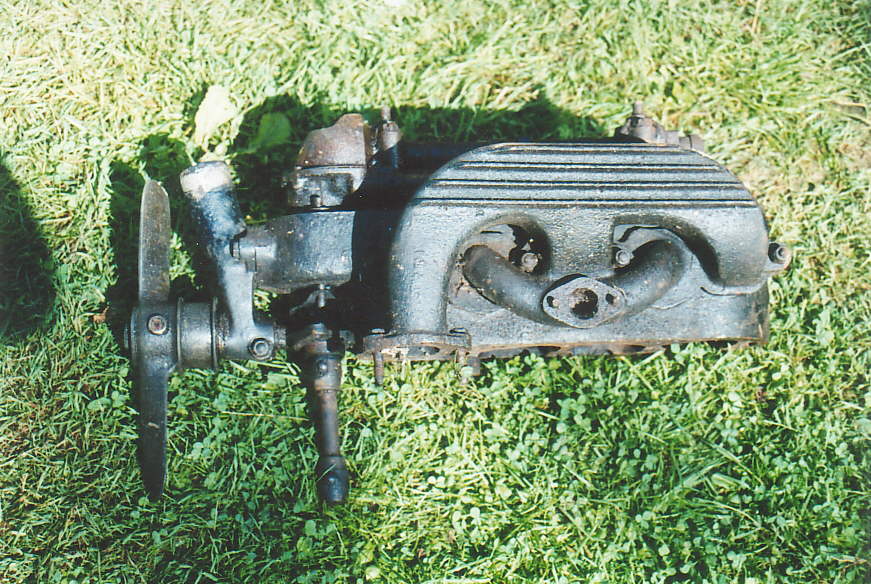
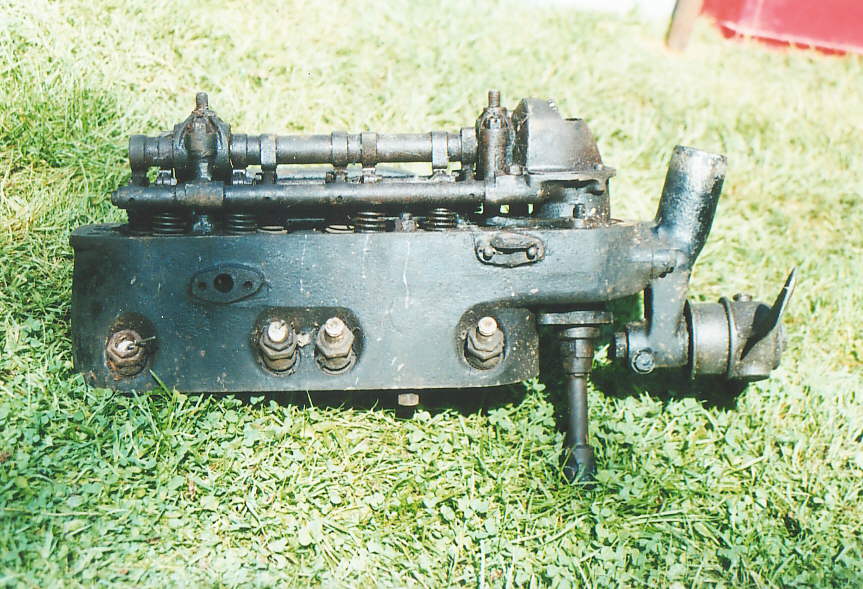
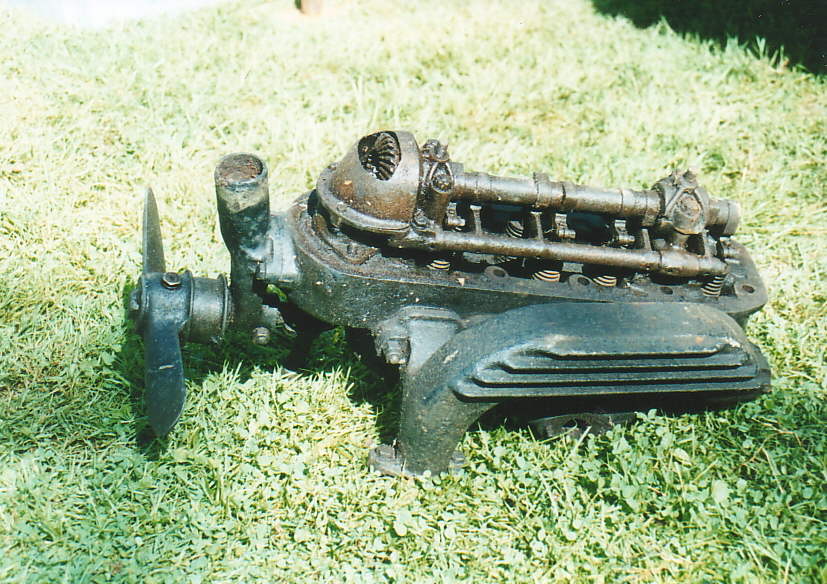





Re: Who designed the Morris Minor engine?
Also, at Gaydon I took these photos of their 1929 Wolseley L8 between scribbling down the first sections of the Genome.
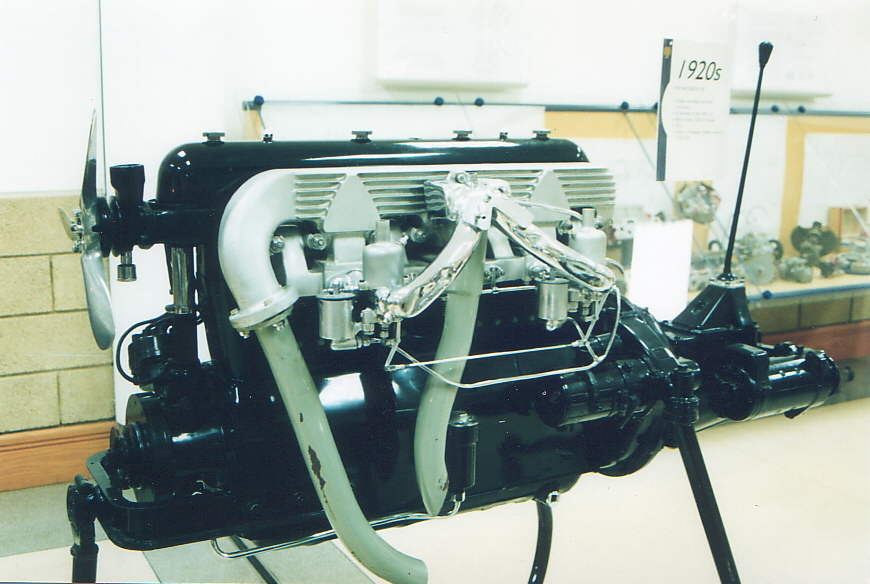
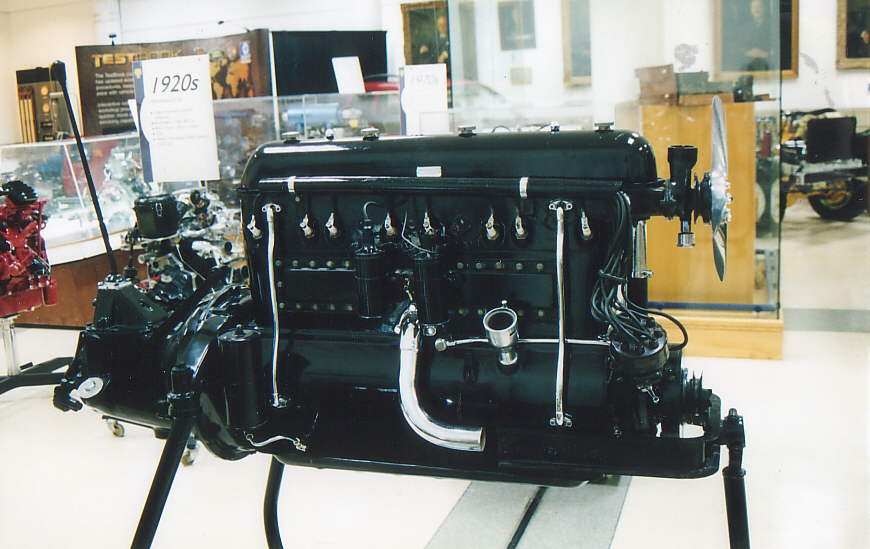


Re: Who designed the Morris Minor engine?
Wow! Thanks for all this information. I will print off a copy and read it carefully this evening.
My friend's name is Keightley as was his grandfather. I know the grandfather worked at Wolseley and was a draughtsman/designer before, and at the time, the Minor was introduced. As so often is the case the person who actually does/did the work is not the one who gains the credit so it is plausible that old man Keightley actually did design pretty much all the engine (and gearbox according to his grandson). I would like to think that the old drawing instruments and slide rule I have been given by my friend -and used to belong to old man Keightley -were the very ones that were on the drawing board where the engine was drawn up.
My friend's name is Keightley as was his grandfather. I know the grandfather worked at Wolseley and was a draughtsman/designer before, and at the time, the Minor was introduced. As so often is the case the person who actually does/did the work is not the one who gains the credit so it is plausible that old man Keightley actually did design pretty much all the engine (and gearbox according to his grandson). I would like to think that the old drawing instruments and slide rule I have been given by my friend -and used to belong to old man Keightley -were the very ones that were on the drawing board where the engine was drawn up.
-
Sam Christie
- Posts: 186
- Joined: Mon Nov 20, 2006 10:37 am
Re: Who designed the Morris Minor engine?
Thanks for this very interesting thread.I would love to know more about Mr Keightley. Has your friend any pictures of the gentleman?